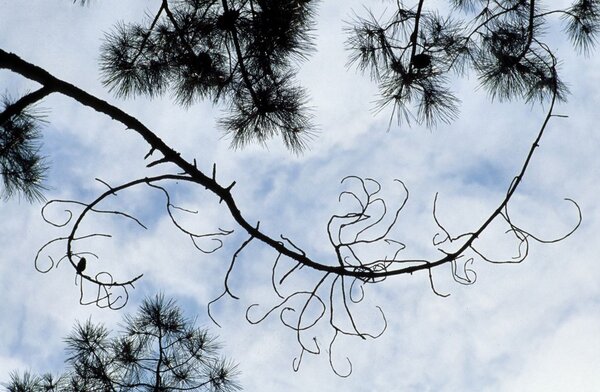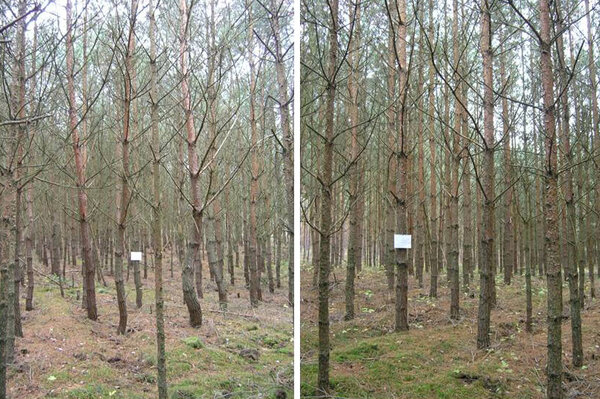Expertise
How do different provenances of Scots pine respond to drought?
Mirko Liesebach | 30.06.2022
Drought tolerance in pine forests is a topic with increasing impotrance, due to the climate change. In a joint project, researchers have tested various provenances of Scots pine.
Along with climate change, an increase of extreme weather events is expected; e.g., drought, heat waves, windstorms. Such events have a strong effect on the growth and survival of our forest stands. The most important question is the choice of suitable species. However, because of the enormous intra-species variation, the question of the provenance is obligatory.
An experiment initiated in 1982 by the International Union of Forest Research Organization (IUFRO) with different progenies of Scots pine of different origin clearly shows the large intra-species variation. Together with the Thünen Institute of Forest Genetics, the analysis was performed by the Bavarian Office for Forestry (LWF) and the University of Munich.
For our analysis we chose 11 provenances from the IUFRO collection and established parallel field trials at two sites in Germany Waldsieversdorf (east of Berlin) and Bensheim (north of Mannheim). Both sites consisted of secondary podsol on pure sand. The site at Waldsieversdorf is characterized by a yearly average temperature of 8.7 °C and a yearly average precipitation of 538 mm at the warm-dry border of the natural distribution area, while Bensheim with 10.7 °C yearly average temperature and a yearly average precipitation of 603 mm is located outside the climate envelope of Scots pine. The average vegetation period at Bensheim is extended by 33 days over that at Waldsieverdorf.
Distinct differences in growth performance could be ascertained between the provenances. The diameter increment was found to depend on the water availability during May to July, while height growth was influenced by the water deficit in May.
The reaction to drought depended very much on the time and duration of the drought occurrence. The results indicate that the local German provenances are better adapted. With multivariate analysis we could identify well-performing provenances with low climatic sensitivity and high resilience against drought events. The German provenances also proved superior in these analyses. Those from Poland and France were also above average, whereas north European provenances were inferior.
These results document the necessity to consider the question of provenance when discussing adaptation and adaptability to cope with climate change.








